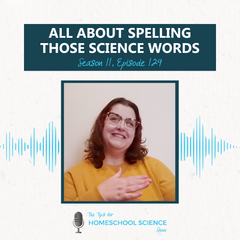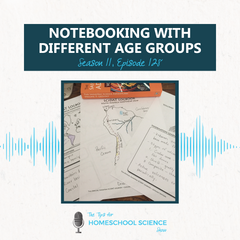FREE Shipping on all our products! (Please Note: Orders may experience a delay of a week or more in shipping due to the high volume of orders at this time of year.)
FREE Shipping on all our products! (Please Note: Orders may experience a delay of a week or more in shipping due to the high volume of orders at this time of year.)
Finding Scientific Information 101: Three Keys to Teaching Science at Home, Part 2
January 22, 2018 2 min read

Finding Scientific Information 101: Three Keys to Teaching Science at Home, Part 2 {Episode 36}
We are back with the second part of the Three Keys to Teaching Science Session. And in this episode, we are going to chat about the second key – gathering information.
Hi, I’m Paige Hudson and you are listening to the Tips for Homeschool Science Show where we are breaking down the lofty concepts of science into building blocks you can use in your homeschool!
Listen to this episode
Share the Tips
If you found these homeschool science tips to be helpful, would you please take a moment to rate it on iTunes or Stitcher? This would help me tremendously in getting the word out so that more earbuds are filled with science-teaching encouragement.
Highlights

The Three Keys to Teaching Science
- Performing Hands-on Scientific Tests
- Gathering Information
- Keeping A Record
Why do you need to gather information?
- Science is a combination of facts and applications.
- Students need to know what has been proven to be true.
- Provides the student with a knowledge base for further discovery.
I recommend you read to your students or have them read about science at least twice a week during the school year.
You can use:
- Science-focused living books
- Age-appropriate encyclopedias
- Standard textbooks
- Internet Research
- YouTube Videos
In the early years, you will read to your children. As their reading skills increase, have your students read more and more on their own.
Tips for gathering information:
- Choose the resources that interest your child.
- Always orally discuss what the students have read.
Takeaway Tidbits
As homeschoolers, we have a wide variety of options to teach science. We can use encyclopedias, living books, resources from the Internet, or textbooks. (Pin this Tidbit)
Whatever you choose to share scientific information with your students, make sure it holds their interest. (Pin this Tidbit)
Additional Resources
Check out the following articles for more tips on gathering information:
- Living Books, Textbooks, or Encyclopedias?
- What are living books?
- How to use living books - as spines or supplements?
- 50+ Books we love to use to teach science
And here are the links to all of the podcasts in this series:
Also in {Podcast} The Tips for Homeschool Science Show
All About Spelling Those Science Words {Season 11, Episode 129}
March 25, 2024 7 min read

In this episode, we'll be interviewing Robin Williams from All About Spelling. Click "Read More" to listen is as we discuss tips and tricks for spelling all those science words!
How should you handle notebooking through the different ages? {Season 11, Episode 128}
March 18, 2024 3 min read

Writing in Science with a Well-Trained Mind (Interview) {Season 11, Episode 127}
March 11, 2024 16 min read

Click "Read More" to listen in as Susan Wise Bauer and Susanna Jarret join Paige to share tips and tools about the third key to teaching science!
Subscribe
Sign up to get the latest on sales, new releases and more …

